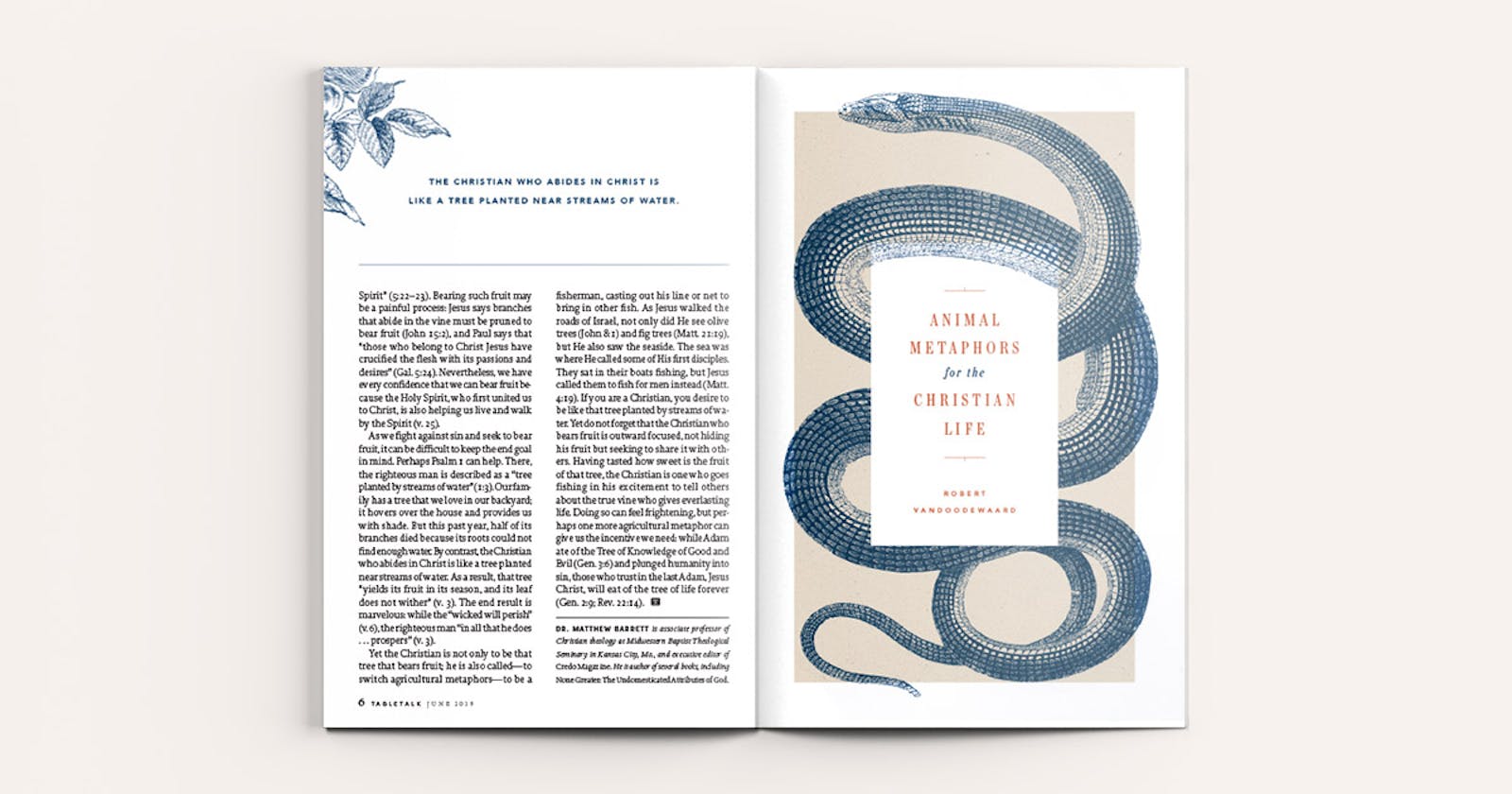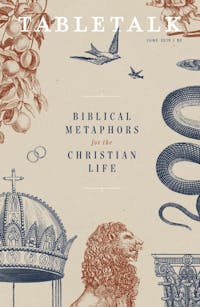
Request your free, three-month trial to Tabletalk magazine. You’ll receive the print issue monthly and gain immediate digital access to decades of archives. This trial is risk-free. No credit card required.
Try Tabletalk NowAlready receive Tabletalk magazine every month?
Verify your email address to gain unlimited access.
Stories and examples of lambs, sheep, and shepherding are woven through the Bible from start to finish. Already in the occupation and the worship of Abel in Genesis 4, there is a bookend in Scripture that focuses our attention on the righteous sacrifice of a lamb and the murder of a shepherd. It is a sad introduction to the realities of sin, but it also hints at the difficulties to come for sheep and shepherds. The patriarchs’ identity as shepherds made them an abomination to the Egyptians (Gen. 46:24). The greatest national leaders of the Old Testament, Moses and David, both spent hard time as actual shepherds before they served as prophet and king of Israel. They saw their people, and even themselves, as like sheep in need of a shepherd (Num. 27:17; Ps. 23). From the time of the exodus onward, the Passover feast focused believers even more clearly on the need for the lamb to take their place in the face of judgment. Throughout their history, the Israelites survived by keeping sheep, eating sheep, and sacrificing sheep, and through this they were taught to think of themselves as like sheep.
The reality is that the metaphors that draw on this experience largely humble the believer. If we had more experience with sheep, as many Israelites did, I think we would have a much richer and more realistic understanding of the comparisons. My own experience was limited to a few hours of trying to help a farmer on shearing day. I learned that sheep really do wander, they get into all kinds of trouble, they get very dirty, and they can even be aggressive. Beautiful little lambs were trampled to death by other sheep. I heard about threats from wolves, coyotes, and even ravens. The reality is that the biblical use of sheep as a metaphor is not as sentimental as we might want to think it is. Many of the metaphors and comparisons assume the weaknesses of sheep, their propensity toward self-destruction, and the difficulty of shepherding.
When we search through the Psalms, the Prophets, and the Gospels for metaphors about sheep, we find many humbling texts that compare believers to sheep. We learn that believers are relatively defenseless, and they need protection. Sheep need to be shown the pastures that are best for them. We desperately need the guidance of God’s Word (Ps. 119:176). We stray in our sinfulness, and when we do, we have to be rescued (Isa. 53:6; Matt. 18:12–14). The stubbornness of God’s people led to their being abandoned like a lamb in the wilderness (Hos. 4:16). In times of trial, sheep stumble and are scattered (Matt. 26:31). There is the danger of evil shepherds who abuse the sheep, drive them away, and fail to attend to them (Ezek. 34). False prophets pretend to be sheep but turn out to be ravenous wolves (Matt. 7:15). The Lord looked with anger on these evil leaders, and He promised to personally visit His flock (Zech. 10:3).
Several of the metaphors in the New Testament direct us to think soberly about the need for discernment and wisdom. The Lord Jesus warned His disciples in Matthew 10:16: “Behold, I send you out as sheep in the midst of wolves. Therefore be wise as serpents and harmless as doves.” Christians who live in the midst of unbelievers must realize that they are surrounded by people who are spiritually, and at times even physically, dangerous to them. Sadly, the danger is not just from wolves outside the church; even fellow church members can “bite and devour” one another (Gal. 5:15). As we respond to difficult or dangerous people, we are called as Christians not to become like wolves but to be wise and to be harmless. This will mean being familiar with Scripture, being ready to give a reason for the hope we have, and even knowing when to be silent. We are also reminded by the picture of the sheep and goats in Matthew 25:32 that the Lord Jesus is the Shepherd who will ultimately discern between His true flock and impostors on the last day. He is the Shepherd who is perfectly aware of every motive and every secret sin, and He knows when love is lacking. Though His flock may appear to be mixed in the present, one day it will be sorted. How much better it is for one to discern his heart today and repent of being a “goat” or a “wolf” before it is too late. The primary mark of true sheep is that they hear the voice of Christ, and they respond to His voice by coming to Him and following Him (John 10:27).

In the end, the beauty and power of the sheep metaphor in Scripture is not primarily in a sentimental comparison to a lamb. It is in recognizing our propensity toward sinfulness and foolishness. Most important, it is in the Lord’s promises to care for poor and needy sinners. “He will feed His flock like a shepherd; He will gather the lambs with His arm, and carry them in His bosom” (Isa. 40:11). He was and is the Good Shepherd who gives His life for the sheep and gathers in His flock (John 10:11–16). But even more profound, He is the Savior who even stooped so low as to become “the Lamb of God who takes away the sin of the world!” (1:29). Though He is the very Word of God, “like a sheep he was led to the slaughter and like a lamb before its shearer is silent, so he opens not his mouth” (Acts 8:32). The beauty of the metaphor is that it teaches us just how much the Lord gave for sinners, and how deep His love is in becoming the Passover Lamb. But the metaphor does not end there. In the final bookend of Scripture, the work of Christ makes the small, humble, and weak symbol of the Lamb into the greatest and most glorious symbol of power over evil. Christ the Lamb is Lord of lords and King of kings (Rev. 17:14). The Lamb is the bridegroom of the church, and He is the central object of our eternal worship (chs. 19–22).
